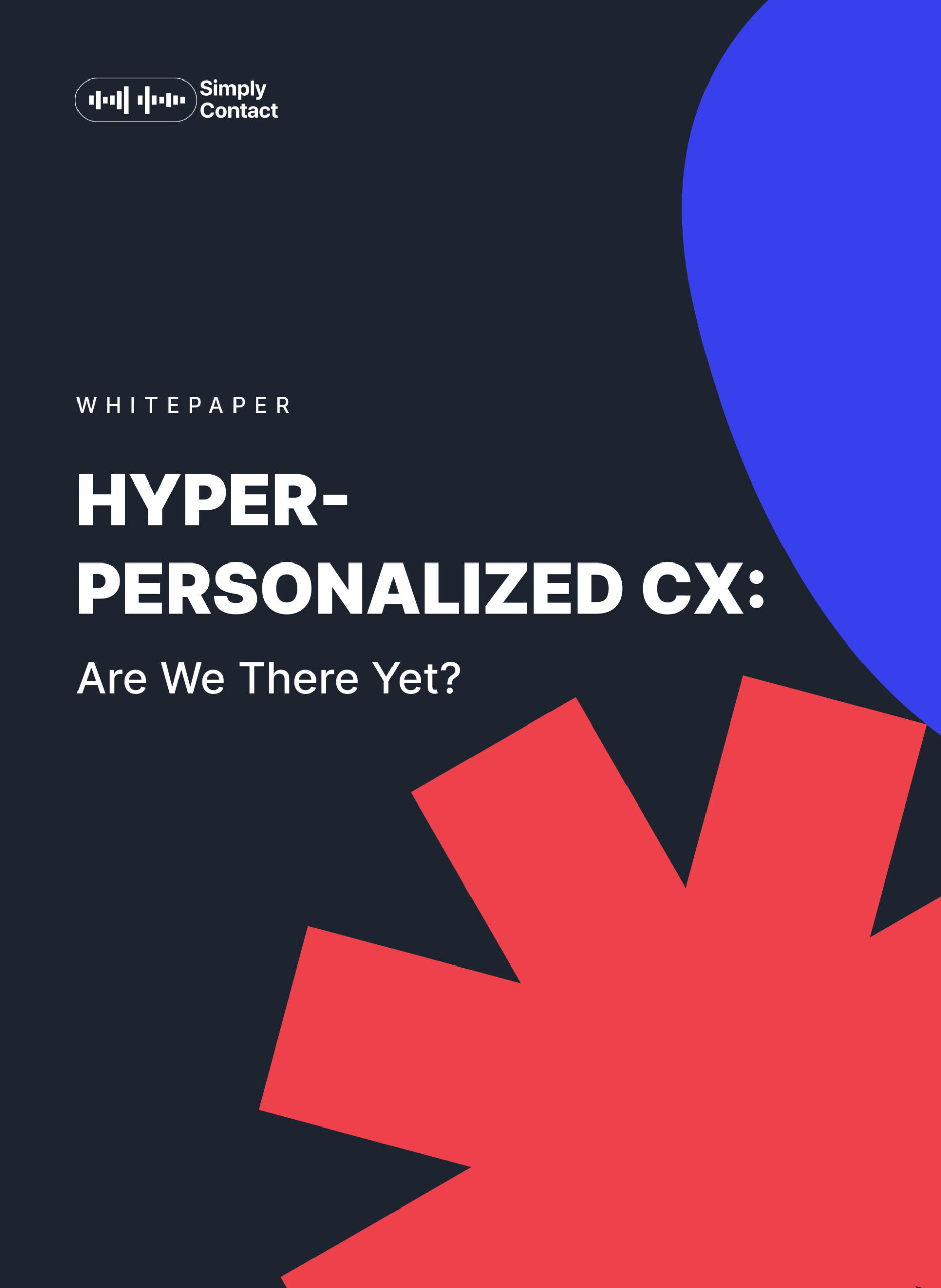Hyper-Personalized Customer Experience
Hyper-personalized customer experience is the industry’s boldest promise and its biggest gap. This whitepaper, based on conversations with leading CX experts, explores the state of personalization today and how AI is transforming it from promise to practice.

What is hyper-personalization, and why is it such a challenge?
The term is widely discussed, yet in practice, not many organizations deliver the dynamic, predictive, and emotionally intelligent journeys customers now expect.
Across eight sections of the whitepaper, we unpack the full stack of customer experience personalization from data maturity and predictive modeling to measurement frameworks and ethical lines not to cross.
We spoke with CX and customer support leaders, including Adrian Swinscoe, Katie Stabler, Jason Noble, Rosebella Abok, Gregorio Uglioni, and Stefan Osthaus, and asked them:
- Hyper personalization vs personalization: what’s the difference?
- Why are so many personalization attempts falling short or worse, backfiring?
- How can technology and people work together to create experiences that feel intuitive, not invasive?
- And where’s the ethical line between tailoring service and exploiting data?
What’s inside
The personalization maturity gap
While 80% of brands claim they deliver personalized CX, only 24% of CX practitioners believe their experience is truly personalized. We explore why the gap exists and what prevents CX teams from moving up the maturity curve.
The state of technology
AI, customer data platforms, and real-time analytics can already unify data, adapt interfaces, and predict needs. Yet 57% of senior marketers admit they struggle with inconsistent data, undermining these capabilities. We assess how today’s AI can realistically help personalize customer experience and whether technology is ready for scale.
Measuring what matters
Traditional CX metrics such as SLA, CSAT, and NPS fail to capture the impact of personalization. We highlight progressive measures such as:
- Outcome relevance (are suggestions acted on?)
- Behavioral loyalty (do customers return faster or engage more deeply?)
- Customer lifetime value (does personalization reduce churn or drive upsell?)
Already, 80% of marketers plan to adopt new metrics like emotional engagement and brand affinity.
The BPO advantage
Outsourcing partners are no longer just delivery engines. Leading brands expect BPOs to bring contextual fluency, actionable customer insights, and the ability to close the data loop. As Gregorio Uglioni observed, “The person on the front line is the last mile of personalization. If the model says one thing but the agent can’t personalize how they deliver it, it won’t feel personal at all.”
Human touch and ethical lines
Eighty-two percent of companies are embedding emotional intelligence into AI—but empathy itself cannot be automated. Agents who understand context remain central. At the same time, ethical risks are growing: 48% of consumers are open to sharing data for better service, yet more than half worry about misuse. We share unethical hyper personalization examples and what consequences they may have.
Where we go from here
Hyper-personalization is not a single project. It is an ongoing journey: improving data visibility, aligning teams, starting with micro-personalization, and scaling responsibly. Every step forward raises customer expectations, making “good enough” today insufficient tomorrow.
Bonus: Two exclusive frameworks from CX leaders
Along with personalization tips from experts, the whitepaper includes two appendices:
- Adrian Swinscoe’s “Three S’s of personalization”
- Stefan Osthaus’ model for building sustainable CX capabilities
Who this whitepaper is for
- CX and marketing leaders redefining customer journeys
- Operations and technology executives facing data silos
- BPO partners aiming to move from vendors to strategic enablers
- Anyone seeking to balance personalization with ethics, trust, and measurable impact
Download the whitepaper
Get fast answers to any remaining questions
Thank you.
Your request has been sent successfully.
Your request has been sent successfully.


